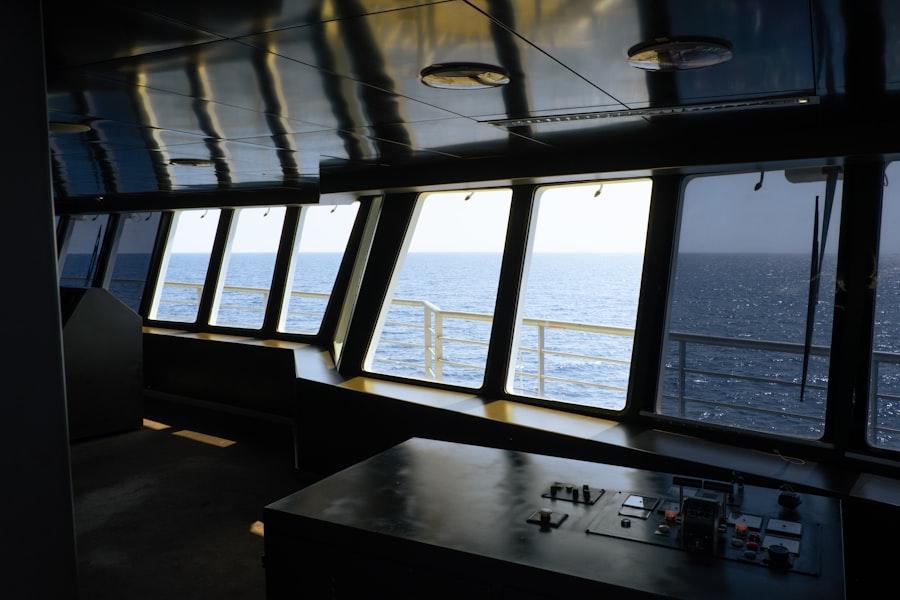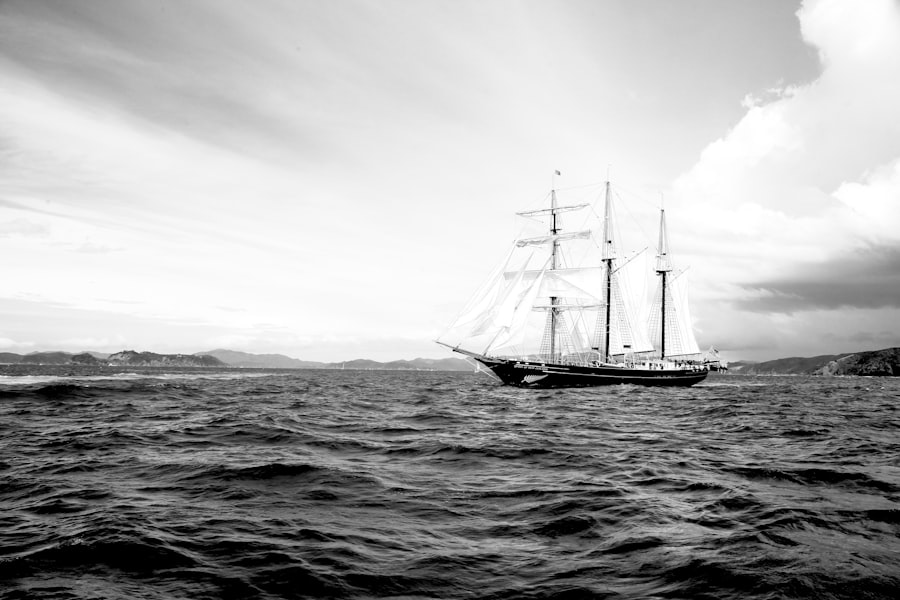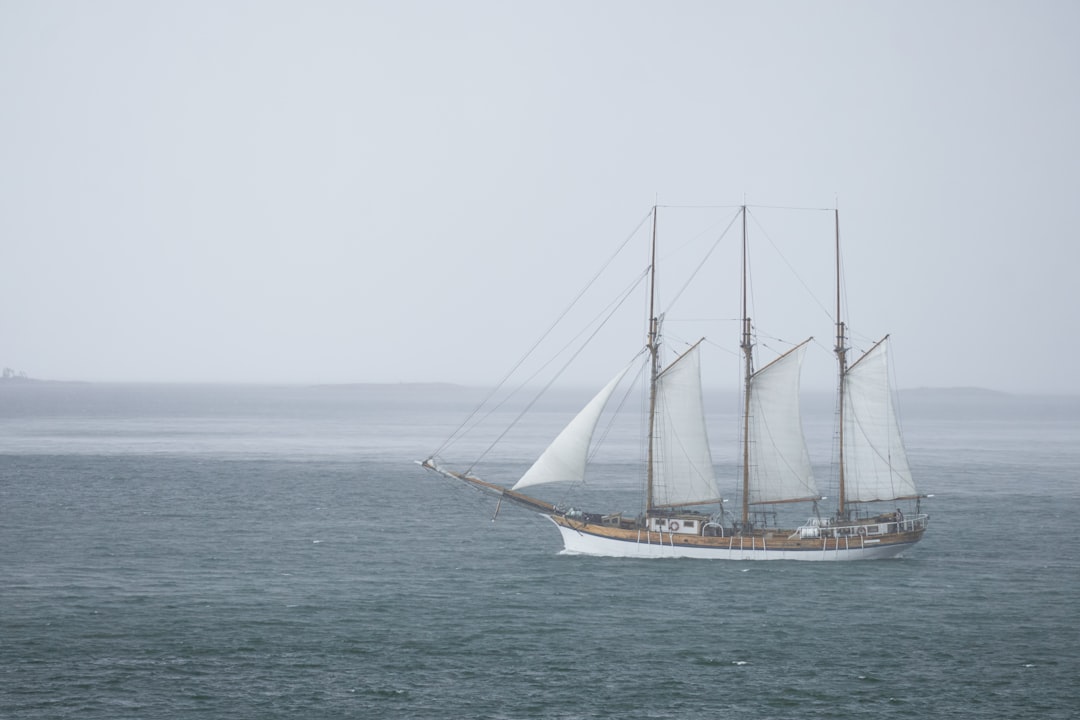The Drake Passage, a body of water situated between the southern tip of South America and Antarctica, is renowned for its tumultuous seas and unpredictable weather. Named after the English explorer Sir Francis Drake, who navigated these waters in the late 16th century, the passage serves as a critical maritime route for vessels traveling to and from the Antarctic region. Spanning approximately 600 kilometers (about 370 miles) at its widest point, the Drake Passage is not only a geographical marvel but also a significant ecological zone, teeming with marine life and serving as a vital conduit for ocean currents.
This passage is often described as one of the most challenging stretches of water in the world. Its unique position allows for the confluence of the Atlantic, Pacific, and Southern Oceans, creating a dynamic environment characterized by strong winds and high waves. The Drake Passage is not merely a physical barrier; it represents a gateway to one of the last great wildernesses on Earth.
For adventurers, researchers, and tourists alike, crossing this passage is both a daunting challenge and an exhilarating experience, offering a glimpse into the raw power of nature.
Key Takeaways
- The Drake Passage is a treacherous body of water located between South America’s Cape Horn and the South Shetland Islands of Antarctica.
- Crossing the Drake Passage presents challenges such as extreme weather, strong winds, and rough seas, making it one of the most dangerous sea crossings in the world.
- The history of Drake Passage crossings dates back to the 16th century, with famous explorers like Sir Francis Drake and James Cook attempting the journey.
- Modern technology, including advanced navigation systems and sturdy vessels, has made crossing the Drake Passage safer and more manageable.
- The best time to cross the Drake Passage is during the austral summer (November to March) when the weather is relatively milder, although conditions can still be unpredictable.
The Challenges of Crossing the Drake Passage
Crossing the Drake Passage is often fraught with challenges that test the mettle of even the most seasoned mariners. The unpredictable weather patterns can shift rapidly, transforming calm seas into turbulent waters within moments. Winds can reach speeds of over 60 knots, and waves can rise to heights of 15 meters or more.
Such conditions can make navigation perilous, leading to discomfort and seasickness among passengers and crew alike. The passage’s reputation for rough seas has earned it nicknames such as “the Drake Shake” and “the Most Dangerous Waters in the World,” underscoring the inherent risks involved in traversing this stretch of ocean. Moreover, the isolation of the Drake Passage adds another layer of complexity to any journey across it.
With limited access to immediate assistance in case of emergencies, vessels must be well-prepared and equipped to handle potential crises. The remoteness of the area means that communication can be sporadic, and rescue operations may take considerable time to mobilize. As such, thorough planning and preparation are essential for anyone attempting to cross this formidable body of water.
The History of Drake Passage Crossings

The history of crossings through the Drake Passage is rich and varied, marked by exploration, adventure, and scientific discovery. Sir Francis Drake himself was one of the first Europeans to navigate these waters in 1578 during his circumnavigation of the globe. His journey opened up new routes for trade and exploration, paving the way for future expeditions to Antarctica.
Over the centuries, numerous explorers have followed in his wake, each contributing to our understanding of this remote region. In the 19th century, the passage became a focal point for whalers and sealers seeking lucrative hunting grounds in Antarctica. These early ventures were often perilous, with many ships lost to storms or ice.
The advent of scientific exploration in the early 20th century brought renewed interest in the Drake Passage as researchers sought to study its unique marine ecosystems and climatic conditions. Notable expeditions, such as those led by Ernest Shackleton and Robert Falcon Scott, further solidified the passage’s place in maritime history as a gateway to one of Earth’s last frontiers.
Modern Technology and Crossing the Drake Passage
| Category | Metrics |
|---|---|
| Distance | Approximately 500 miles |
| Time | Average of 2-3 days |
| Modern Technology | GPS, satellite communication, and advanced navigation systems |
| Challenges | Extreme weather conditions and rough seas |
| Transportation | Ice-strengthened vessels and expedition ships |
In recent years, advancements in technology have significantly improved the safety and comfort of crossing the Drake Passage. Modern vessels are equipped with sophisticated navigation systems that allow for precise route planning and real-time weather monitoring. These innovations enable ships to avoid the worst conditions and optimize their journeys across this challenging stretch of water.
Additionally, improved hull designs and stabilization systems help mitigate the effects of rough seas, providing a smoother ride for passengers. Furthermore, communication technology has evolved dramatically, allowing vessels to maintain contact with shore-based support teams throughout their journey. This connectivity enhances safety by enabling quick responses to emergencies or changes in weather conditions.
As a result, modern expeditions across the Drake Passage are not only more efficient but also more secure than ever before, encouraging greater exploration and tourism in this remote region.
The Best Time to Cross the Drake Passage
Timing is crucial when planning a crossing of the Drake Passage. The best window for traversing this body of water typically falls between late November and early March, coinciding with the Southern Hemisphere’s summer months.
This seasonal advantage allows for safer crossings and enhances the overall experience for travelers seeking to explore Antarctica. However, even during this optimal timeframe, conditions can still be unpredictable. It is not uncommon for storms to arise suddenly, reminding travelers that nature remains in control.
Those planning a crossing should remain flexible with their schedules and be prepared for potential delays or changes in itinerary due to weather-related factors. Ultimately, while summer offers the best chance for favorable conditions, adventurers must always respect the power of the ocean.
Safety Measures for Crossing the Drake Passage

Given the inherent risks associated with crossing the Drake Passage, safety measures are paramount for both crew members and passengers. Vessels undertaking this journey are required to adhere to strict safety protocols that include regular drills and equipment checks. Life jackets, lifeboats, and emergency beacons are standard safety gear on board, ensuring that everyone is prepared for unforeseen circumstances.
Additionally, many operators provide comprehensive briefings before departure, educating passengers about safety procedures and what to expect during their journey. These briefings often cover topics such as seasickness remedies, emergency protocols, and how to properly use safety equipment. By fostering an environment of preparedness and awareness, operators aim to minimize risks and enhance passenger confidence as they embark on their adventure across one of the world’s most challenging maritime routes.
Wildlife in the Drake Passage
The Drake Passage is not only known for its challenging conditions but also for its rich biodiversity. This region serves as a critical habitat for various marine species, including whales, seals, and seabirds. The nutrient-rich waters support an abundance of krill, which forms the foundation of the food chain in this ecosystem.
As a result, wildlife enthusiasts often flock to this area in hopes of witnessing these magnificent creatures in their natural habitat. Among the most notable inhabitants of the Drake Passage are humpback whales, orcas, and blue whales. These majestic mammals can often be spotted during crossings as they migrate through these waters in search of food.
Additionally, seabirds such as albatrosses and petrels are frequently seen soaring above the waves, taking advantage of the strong winds that characterize this region. For many travelers, encountering these animals adds an unforgettable dimension to their journey across the Drake Passage.
Alternative Routes to Avoid the Drake Passage
While crossing the Drake Passage is a rite of passage for many adventurers heading to Antarctica, some travelers may seek alternative routes due to concerns about rough seas or time constraints. One such option is to fly directly to research stations or tourist destinations on the Antarctic Peninsula.
Another alternative involves taking longer routes around Cape Horn or utilizing other maritime passages that may offer calmer waters. However, these alternatives often come with trade-offs in terms of time and cost. While they may provide a more comfortable journey for some travelers, they may also limit opportunities for wildlife viewing or exploration that come with crossing through the iconic Drake Passage.
The Experience of Crossing the Drake Passage
For many adventurers, crossing the Drake Passage is an experience unlike any other—a blend of exhilaration and trepidation that leaves an indelible mark on their memories. As vessels navigate through these turbulent waters, passengers often find themselves captivated by both the beauty and ferocity of nature surrounding them. The sight of towering waves crashing against the hull can evoke feelings of awe while simultaneously reminding travelers of their vulnerability in such an untamed environment.
Despite its challenges, many who have crossed the Drake Passage describe it as a transformative experience that fosters a deep appreciation for nature’s power. The camaraderie among passengers facing shared challenges often leads to lasting friendships forged through mutual support during rough seas. For those who embrace this adventure wholeheartedly, crossing the Drake Passage becomes not just a journey from one point to another but rather an unforgettable chapter in their personal story of exploration.
Famous Expeditions and Voyages Across the Drake Passage
Throughout history, numerous famous expeditions have traversed the Drake Passage, each contributing significantly to our understanding of this remote region. One notable voyage was that of Ernest Shackleton’s Imperial Trans-Antarctic Expedition in 1914-1917. Shackleton’s ship, Endurance, famously became trapped in pack ice during its attempt to cross Antarctica from one side to another.
The harrowing tale of survival that ensued has become legendary in maritime history. Another significant expedition was led by Robert Falcon Scott during his ill-fated Terra Nova Expedition from 1910-1913. Scott’s team aimed to be the first to reach the South Pole but faced numerous challenges during their journey across both land and sea.
Their experiences highlight not only the dangers associated with crossing the Drake Passage but also humanity’s enduring spirit of exploration despite adversity.
The Future of Crossing the Drake Passage
As interest in Antarctic exploration continues to grow among adventurers and researchers alike, so too does awareness regarding environmental conservation efforts within this fragile ecosystem. The future of crossing the Drake Passage will likely involve balancing tourism with sustainable practices aimed at preserving its unique biodiversity for generations to come. Innovations in technology will undoubtedly play a crucial role in shaping how future crossings are conducted—enhancing safety measures while minimizing environmental impact through eco-friendly practices onboard vessels operating in these waters.
Ultimately, as humanity seeks to explore new frontiers while respecting nature’s boundaries, crossing through this iconic passage will remain an enduring symbol of adventure—a testament to both our curiosity about what lies beyond our horizons and our responsibility toward protecting our planet’s most precious resources.
Navigating the treacherous waters of the Drake Passage is a formidable challenge for ships, as this body of water is known for its unpredictable weather and strong currents. For those interested in learning more about the experiences and strategies employed by vessels that brave this route, a related article can be found on MyGeoQuest. This article provides insights into the navigation techniques and safety measures that are crucial for a successful crossing. To delve deeper into this topic, you can read the article by visiting this link.
WATCH NOW! Drake Passage: Earth’s Deadliest Waters Revealed
FAQs
What is the Drake Passage?
The Drake Passage is the body of water between the southern tip of South America and the northern tip of the Antarctic Peninsula. It is known for its rough seas and challenging weather conditions.
Do ships cross the Drake Passage?
Yes, ships do cross the Drake Passage. It is a common route for ships traveling between South America and Antarctica, as well as for scientific research expeditions and tourist cruises to the Antarctic region.
What are the challenges of crossing the Drake Passage?
The Drake Passage is known for its strong winds, large waves, and unpredictable weather. It is often considered one of the roughest stretches of water in the world, making it a challenging crossing for ships.
How long does it take to cross the Drake Passage by ship?
The crossing of the Drake Passage can take anywhere from 2 to 4 days, depending on the weather conditions and the speed of the ship. It is approximately 600 miles wide at its narrowest point.
Are there alternatives to crossing the Drake Passage by ship?
There are no alternative routes to cross the Drake Passage by ship, as it is the only direct route between South America and Antarctica. However, some travelers choose to fly to King George Island in Antarctica and then board a ship from there to avoid the open ocean crossing.
